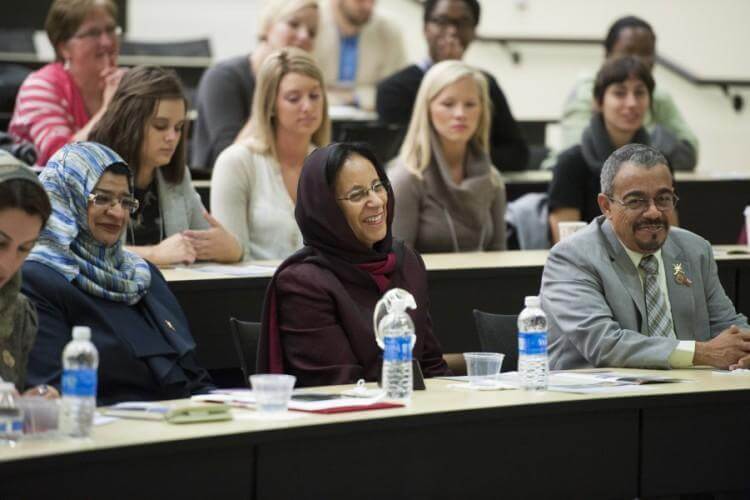Society
3.11.2020
Oman: more women are enrolling into higher education than men

A majority of female students were admitted into higher education in Oman’s latest academic year. The Ministry of Higher Education’s data, from the Statistics and Information Department of the Higher Education Admission Centre (HAEC), counted 24,445 new students of which 57.3% are women.
Reforms for women’s rights, and more sensitivity towards important gender issues are gaining more ground throughout the Middle East and the nation at the mouth of the Persian Gulf is certainly keeping up. With a notably young population, Oman understands the importance of its’ educational institutions, to continue on its path towards a more inclusive cultural and economic system that works for everyone.

Students attend a lecture at the University of Nizwa, Oman).
More estrogen, less testosterone
Education remains the foundation to enabling systemic changes and now women outnumber men in the lecture halls of Oman’s universities.
According to the government’s’ new figures, Omani students, both enrolling in universities within the Sultanate and abroad, increased by 2.6%. Within the admitted students in all higher education establishments, a grand total of 24,445, 57.3% are women and only 42.6% are men.

Where and what are they studying?
The number of students admitted to public, government-run universities stood at 61.9% (15,151) out of the total number of admitted students. In comparison, 32.4% (7,935) were admitted into private higher education institutions. As for those enrolled into schools beyond the country’s borders, they made up a considerable 5.6% (1,359) of the total students enrolled.

A’Sharqiyah University in Oman. Photo credits: Hazel Owen.
Some of the best ranked schools are the Sultan Qaboos University in Muscat, Sohar University a couple hours away, or the University of Nizwa a bit further South.
The fields of studies racking up the most inscriptions within these Omani scholars include business administration (30%), engineering (25.3%) and information technology (12.%).
These female scholars are not shying away from male-dominated fields, one’s that still struggle to assimilate the same impartiality within the recruitment process and within the workplace. But with their tenacity and exemplary academic results, their presence will eventually infiltrate the labor market in all its facets.
popular

